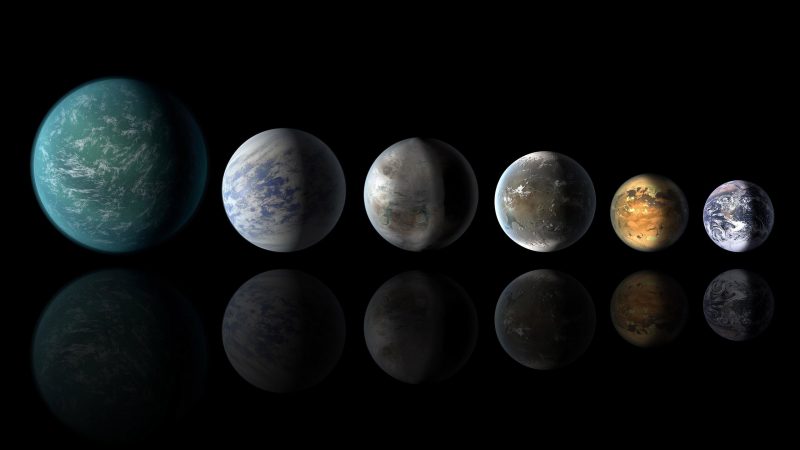
Earthly life requires water. So scientists contemplating life outside our solar system have traditionally thought about watery exoplanets, similar to our own water world. An exoplanet similar to Earth – in terms of atmosphere, distance to its star, mass, etc – suggests a possibly habitable world. But scientists said in late June 2022 that long-term liquid water doesn’t have to occur under circumstances similar to those of Earth. The exoplanets can be a fair bit larger and may not even lie near a star!
The new study comes from researchers at the University of Bern, the University of Zürich and the National Center of Competence in Research (NCCR) PlanetS. It suggests that some exoplanets different from Earth might be able to sustain liquid water for billions of years. The study focused on super-Earth worlds, with thick primordial (original) atmospheres of hydrogen and helium. Earth also had a hydrogen-helium atmosphere shortly after it formed, billions of years ago.
The researchers published their peer-reviewed findings in the journal Nature Astronomy on June 27, 2022.
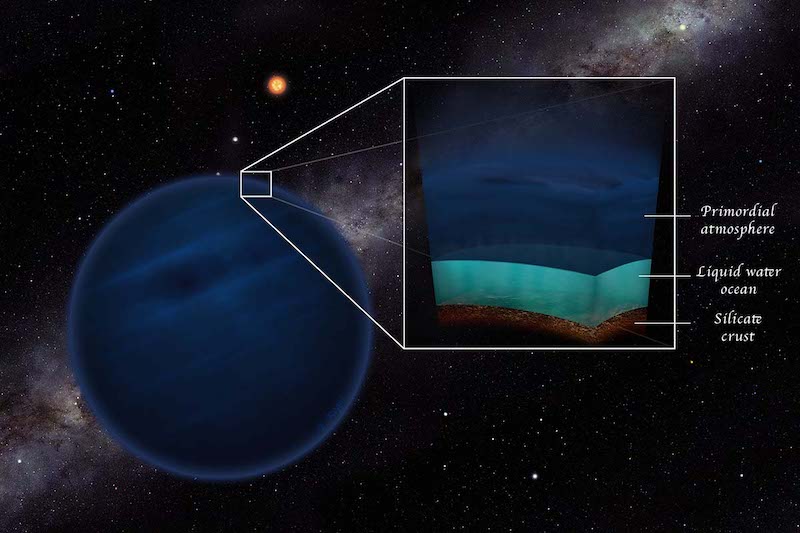
Habitable water worlds
Ever since the search for exoplanets began decades ago, astronomers have focused on finding rocky planets like Earth. Worlds that could have lakes and oceans. As logic would seem to dictate, those would be the most likely worlds to support life. But now, new research shows that even planets that are quite unlike Earth in many ways could still have oceans … and maybe life.
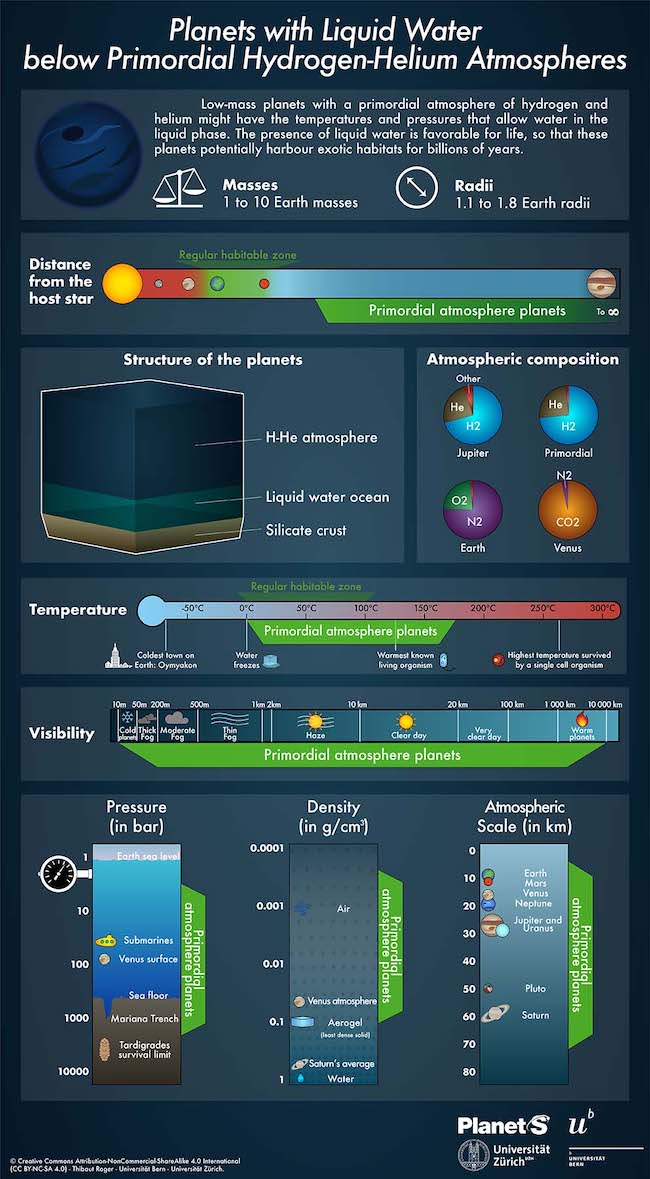
On Earth, water remains liquid partly due to the greenhouse effect of the atmosphere. Even though there are still regions of ice, like at the poles, lakes and oceans remain liquid for the most part. This has allowed life to flourish on our planet. Study co-author Ravit Helled at the University of Zürich, said:
One of the reasons that water can be liquid on Earth is its atmosphere. With its natural greenhouse effect, it traps just the right amount of heat to create the right conditions for oceans, rivers and rain.
Primordial atmospheres and liquid water
But a few billion years ago, when the Earth first formed, it was a very different world. Its atmosphere was quite different from the one it has today, as Helled noted:
When the planet first formed out of cosmic gas and dust, it collected an atmosphere consisting mostly of hydrogen and helium, a so-called primordial atmosphere.
On Earth, that atmosphere was gradually transformed by life into one consisting primarily of nitrogen and oxygen. On some other planets, however, notably larger and more massive ones, the primordial atmosphere can remain for billions of years. As it happens, though, those atmospheres can also create a greenhouse effect. Could some of those planets sustain liquid water?
Helled said:
Such massive primordial atmospheres can also induce a greenhouse effect, much like Earth’s atmosphere today. We therefore wanted to find out if these atmospheres can help to create the necessary conditions for liquid water.
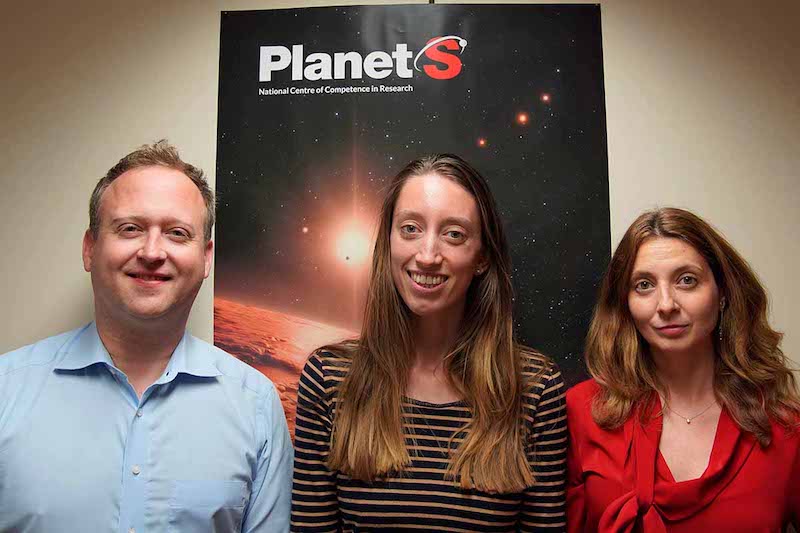
How non-Earth-like planets could be habitable water worlds
The researchers ran simulations of many different possible planetary environments. The computer models accounted for various factors, including composition of the atmosphere, amount of radiation from the host star and internal planetary heat. For planets with massive primordial atmospheres, they found something interesting. Some of those planets could, indeed, have liquid water on their surfaces. Lead author of the paper, Marit Mol Lous, explained:
What we found is that in many cases, primordial atmospheres were lost due to intense radiation from stars, especially on planets that are close to their star. But in the cases where the atmospheres remain, the right conditions for liquid water can occur. In cases where sufficient geothermal heat reaches the surface, radiation from a star like the sun is not even necessary so that conditions prevail at the surface that allow the existence of liquid water. Perhaps most importantly, our results show that these conditions can persist for very long periods of time, up to tens of billions of years.
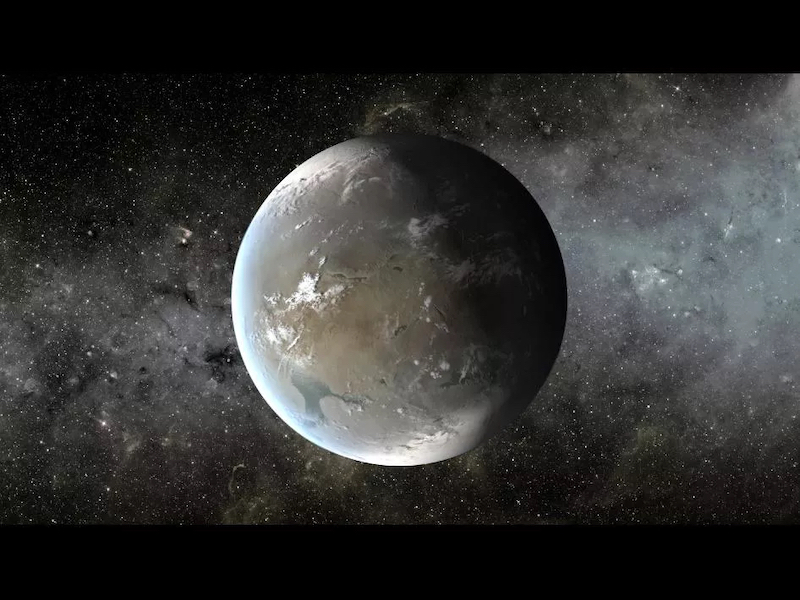
Implications for habitability and life
If indeed there could be liquid water on such worlds for many billions of years, that would seem to be promising for the prospects of life. Our own planet is teeming with millions of varieties of life, which started evolving only within the past four to five billion years. What might be possible on planets with liquid water for much longer than that? According to study co-author Christoph Mordasini:
Since the availability of liquid water is a likely prerequisite for life, and life probably took many millions of years to emerge on Earth, this could greatly expand the horizon for the search for alien lifeforms. Based on our results, it could even emerge on so-called free-floating planets, that do not orbit around a star.
There are still many questions to be answered, however. Mordasini continued:
While our results are exciting, they should be considered with a grain of salt. For such planets to have liquid water for a long time, they have to have the right amount of atmosphere. We do not know how common that is. And even under the right conditions, it is unclear how likely it is for life to emerge in such an exotic potential habitat. That is a question for astrobiologists. Still, with our work we showed that our Earth-centered idea of a life-friendly planet might be too narrow.
Bottom line: A new study from researchers in Europe shows how potentially habitable water worlds don’t need to be just like Earth. The results may help expand the search for alien life.
Source: Potential long-term habitable conditions on planets with primordial H–He atmospheres
The post Habitable water worlds don’t have to be Earth-like first appeared on EarthSky.
0 Commentaires